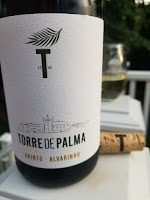These are the sentiments of two experts regarding Garnacha and the DO Calatayud (created 1990) wine region, an arid area of rolling hills within the autonomous community of Aragon in northeast Spain. Romans introduced viticulture to the region, and despite periods of neglect and boom (Moorish conquest and Christian re-conquest), grape growing has continued to this day. Calatayud's climate is continental with cold winters but extremely hot and dry summers that are somewhat mitigated by the elevation of Calatayud's vineyards. These vines are planted on the south-facing slopes of the Sierra de la Virgen mountain range where altitudes can reach 3,280 ft (1,000m). This altitude helps create a better balance between residual sugar and high potential alcohol in a grape's development."Hola, My name is Rubén, Carlos Rubén, winemaker in Spain and my favourite grape is the Garnacha. I love all the facets of this unique grape variety, which exists in white, grey, and red. It offers plenty of options, which is exactly the feature that my good friend Mark, the high-spirited founder of Master Winemakers, used to challenge me. To follow the Garnacha trail across Spain and make beautiful wines, originating from a wide range of terroirs. Mark has dubbed me La Voz de la Garnacha, and it is quite a challenge to live up to such a title, but I immediately felt like giving it my best shot." Bodegas Raíces Ibéricas
"The red wine of the Garnacha variety represents the essence of Calatayud wines". -- D.O.P. Calatayud
Vineyards are planted on loose, rocky soils of granite, slate, clay, or loam (limestone and clay) with each providing good drainage. In general, the grapes grown on soils of slate and granite are known for generating wine with greater minerality and spicey aroma; whereas grapes grown on more clayish and loam soil produce a wine with greater fruitiness. Yields are typically very low because of the harsh conditions, further adding to the quality of the wines.
Calatayud is known for its big and bold red wines with Garnacha representing more than three-quarters of vineyard plantings. The local Consejo Regulador sets quality criteria according to the age of the Garnacha vines, with those more than 50 years old given the classification Calatayud Superior. Garnacha also thrives in the highest and steepest elevations where mechanical harvesting is nearly impossible and most of the cultivation work is done by hand. During a Spanish Wine Roadshow held in Washington D.C., I was introduced to one Calatayud producer, Bodegas Raíces Ibéricas. Like several of the wineries in Calatayud, this is a new, organic winery producing wine in an old cooperative in the town of Maluenda. Although the source 19 different Spanish grape varieties, winemaker Carlos Rubén and owner Mark Schiettekat recognize the predominance of Garnacha. This Las Pizarras Vina Alarba Garnacha is made from grapes located between 2,750 and 3,250 feet above sea level and planted in slate-dominated soils. The Alarba region also hosts many old vines, some more than 60 years old. This is an intense wine, with lively aromas, a full-bodied and spicy core, followed by noticeable chewy tannins and lasting freshness.












































